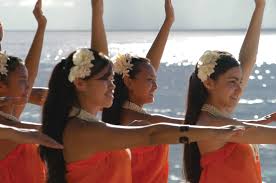by Francis Tuschek, Staff Writer
The Chamorros, the native inhabitants of the Mariana Islands in Micronesia, are split between Guam and the Northern Mariana Islands politically.
Presently, Chamorro heritage is upheld through language sharing and education provided by The Guam Museum. Despite this, asserting themselves and having a voice as a US territory remains an ongoing challenge.
Dr. Michael Bevacqua, a Chamorro cultural historian and museum curator, notes that Chamorro people in Guam have a nuanced relationship with the US, identifying as Pacific islanders who also hold American citizenship.
Following their liberation in July 1944, Chamorros felt a strong push to assimilate to American culture. Consequently, they ceased passing down their language to their children and faced pressure to relocate to the US mainland to make way for the construction of military bases, resulting in the displacement of numerous families.
According to Bevacqua, there was a prevailing sentiment that being Chamorro held little value, urging them to abandon their heritage and embrace American identity instead.
For the Chamorros, participation in the Festival of Pacific Arts during the 1970s and 80s was pivotal. It provided them with insight into how other islanders were managing modernity, showcasing a pride in their islander identity rather than denying it.
Observing other islanders embrace their heritage and adapt to the 20th century in their unique ways was eye-opening for the Chamorros. Rather than completely abandoning their traditions, they saw the value in integrating and evolving them.
Participation in this significant gathering of indigenous peoples sparked a renewed interest among cultural practitioners, ultimately leading to a Chamorro renaissance. This revival was evident in the resurgence of traditional practices such as jewelry-making and language revitalization, as well as movements advocating for indigenous rights.
Recognizing the pride other Pacific Islanders took in their cultural identity inspired Chamorros to embrace their heritage without sacrificing their indigenous roots for a colonial identity. They realized they could embrace their Chamorro identity while enjoying the conveniences of American life, leading to a celebration of their unique cultural heritage.

